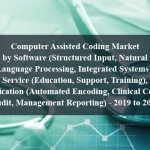OVERVIEW
Research by Global Market Studies has reported a CAGR of 7.06 % for the Live Cell Imaging Market, expecting it to expand to a value of USD 2.94 billion by 2028.
The Live Cell Imaging Market refers to the global marketplace for technologies, instruments, software, reagents, and services used to visualize and analyze living cells or tissues in real time. This field plays a crucial role in various scientific disciplines, including cell biology, genetics, neuroscience, drug discovery, developmental biology, and other life sciences.
Live cell imaging aids researchers in cell biology, drug discovery, neuroscience, cancer research, stem cell research, and developmental biology, providing insights into cell behavior, function, and differentiation.
Market Dynamics
Drivers:
Advancements in imaging technologies, such as confocal microscopy, two-photon microscopy, and super-resolution microscopy, have expanded the capabilities of live cell imaging, attracting more researchers and industries to invest in these technologies. The growing demand for personalized medicine and targeted therapies requires a deeper understanding of individual cellular responses, driving the adoption of live cell imaging techniques. Drug development activities are also driven by the need for real-time information on drug effects.
Increased funding for research, including cell biology and imaging technologies, accelerates the growth of the live cell imaging market. The increase in chronic diseases like cancer and neurological disorders necessitates extensive research to understand cellular mechanisms, creating a demand for live cell imaging tools and solutions. Advancements in cell biology, genetics, and molecular biology have generated the need for advanced imaging techniques that can visualize and analyze cellular processes in real time.
Opportunities:
High-resolution, real-time imaging capabilities are provided by advanced imaging technologies such as confocal microscopy, two-photon microscopy, spinning disk confocal microscopy, and super-resolution microscopy. Software tools allow scientists to analyze images, quantify data, and depict biological processes, allowing them to get important insights from their imaging studies.
To label biological components and structures, live cell imaging techniques require specific reagents and fluorescent probes. Cell culture and assay procedures are available to protect cell viability and functionality during live cell imaging research. Businesses provide technical support, training, and maintenance services to ensure maximum efficiency and client satisfaction. Automation advancements have resulted in the creation of automated live cell imaging systems, which enable high-throughput imaging and data collection, hence speeding up the research process.
Restraints:
Live cell imaging systems can be expensive, challenging to maintain, and expensive to analyze. The large amount of data generated from these experiments requires expertise in image processing and data analysis. Exposure to light during live cell imaging can cause phototoxicity and photobleaching, potentially altering cellular behavior.
Sample viability and integrity can also be affected, especially in long-term experiments. Imaging depth limitations, particularly in thick tissues or 3D cell culture models, may restrict the study of certain biological processes. Additionally, live cell imaging often involves the use of animal or human cells, raising ethical concerns in research and experimentation.
Regional Information:
North America: This region is a significant market for live cell imaging technologies. It has a strong presence of well-established research institutions, pharmaceutical companies, and biotechnology firms that drive the adoption of advanced imaging technologies. Research funding and a supportive regulatory environment contribute to the growth of the market in this region.
Europe: Europe is another prominent market for live cell imaging technologies. Countries like Germany, the United Kingdom, France, and Switzerland have robust academic and research infrastructures, leading to substantial demand for cutting-edge imaging systems. The European market benefits from collaborations between academia and industry, which drive innovation in the field.
Asia-Pacific: The Asia-Pacific region, including countries like China, Japan, South Korea, and India, is experiencing rapid growth in the life sciences industry. Rising investments in research and development, a large population base, and increasing healthcare expenditures create significant opportunities for live cell imaging technologies in this region.
Recent Developments:
• June 2023: Nanolive launched the 3D Cell Explorer 96focus, an innovative platform that brings unlimited high-content analysis to live cell imaging without the need for labeling. With the aid of AI-powered digital assays and an automated workflow, the 3D Cell Explorer 96focus streamlines the imaging process, offering researchers a cost-effective and reliable means of conducting cell imaging experiments.
• February 2023: Nikon Corporation launched the Nikon Spatial Array Confocal (NSPARC) detector for AX systems. This detector enables high-resolution imaging of live tissue with minimal phototoxicity.
Key Players:
Becton, Dickinson, and Company, Zeiss Group, Danaher Corporation, Olympus Corporation, Live Cell Instrument, Nikon Corporation Inc., Perkin Elmer Inc., Merck KGaA, and Thermo Fisher Scientific Inc.
Frequently Asked Questions
1) What is the projected market value of the Live Cell Imaging Market?
– The Live Cell Imaging Market is expected to reach a value of USD 2.94 billion by 2028.
2) What is the estimated CAGR of the Live Cell Imaging Market over the 2023–2028 forecast period?
– The Live Cell Imaging Market is expected to grow at a CAGR of approximately 7.06% from 2023 to 2028.
3) Who are the key players in the Live Cell Imaging Market?
– Becton, Dickinson, and Company, Zeiss Group, Danaher Corporation, Olympus Corporation, Live Cell Instrument, Nikon Corporation Inc., Perkin Elmer Inc., Merck KGaA, and Thermo Fisher Scientific Inc.
4) What are the drivers for the Live Cell Imaging Market?
– Confocal, two-photon and super-resolution microscopy have improved live cell imaging, attracting researchers and enterprises. Personalized medicine and tailored medicine require cellular response comprehension. Cell biology and imaging research funding boost the live cell imaging sector. Cellular, genetic, and molecular biology advances necessitate better imaging techniques.
5) What are the restraints and challenges in the Live Cell Imaging Market?
– Live cell imaging systems are expensive, challenging to maintain and require expertise in image processing and analysis. Exposure to light, imaging depth limitations, and ethical concerns limit its adoption.
6) What are the key applications and offerings of the Live Cell Imaging Market?
– Live cell imaging aids researchers in cell biology, drug discovery, neuroscience, cancer research, stem cell research, and developmental biology by providing insights into cell behavior, function, and differentiation.
7) Which region is expected to drive the market for the forecast period?
– Asia-Pacific is the fastest-growing region in the global market and is expected to dominate shares in the forecast period.
Why Choose Us?
Insights into Market Trends: Global Market Studies reports provide valuable insights into market trends, including market size, segmentation, growth drivers, and market dynamics. This information helps clients make strategic decisions, such as product development, market positioning, and marketing strategies.
Competitor Analysis: Our reports provide detailed information about competitors, including their market share, product offerings, pricing, and competitive strategies. This data can be used to inform competitive strategies and to identify opportunities for growth and expansion.
Industry Forecasts: Our reports provide industry forecasts, which will inform your business strategies, such as investment decisions, production planning, and workforce planning. These forecasts can help you to prepare for future trends and to take advantage of growth opportunities.
Access to Industry Experts: Our solutions include contributions from industry experts, including analysts, consultants, and subject matter experts. This access to expert insights can be valuable for you to understand the market.
Time and Cost Savings: Our team at Global Market Studies can save you time and reduce the cost of conducting market research by providing comprehensive and up-to-date information in a single report, avoiding the need for additional market research efforts.












